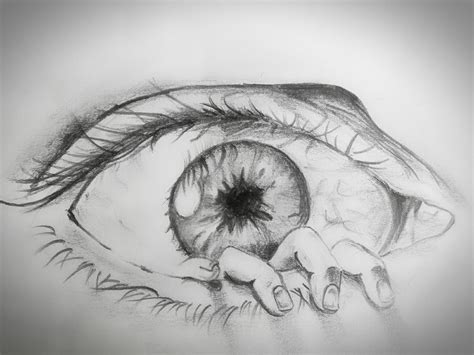Deep meaningful drawings are those that evoke a strong emotional response or convey thought-provoking ideas. They often go beyond mere representation, capturing the essence of human experience and inviting contemplation.

The Power of Expression
Drawing has long been used as a powerful means of expression. It allows artists to communicate their inner thoughts, feelings, and experiences in a tangible form. Deep meaningful drawings can:
- Process emotions: Drawing can help individuals process and express complex emotions, providing catharsis and healing.
- Convey ideas: Artists use symbolism, metaphor, and visual arrangements to convey ideas that may be difficult to articulate through words.
- Foster connection: Drawings can elicit empathy and provide a shared experience, connecting people through shared emotions and insights.
Principles of Deep Meaningful Drawings
Creating deep meaningful drawings requires a combination of technical skill and emotional depth. Key principles include:
Technical Skill
-
Strong composition: Arrange elements intentionally to create visual balance, depth, and movement.
Value and contrast: Use light and dark values to create a sense of space, emphasis, and drama.
-
Intentional mark-making: Choose drawing tools and techniques that convey your desired mood and tone.
Emotional Depth
-
Personal experience: Draw from your own experiences, emotions, and memories to create authentic and relatable works.
Symbolism and metaphor: Use symbols, images, and motifs to convey deeper meanings and emotions.
Emotional resonance: Aim to create drawings that evoke a strong emotional response in viewers, connecting with their own experiences.
How Deep Meaningful Drawings Matter
Deep meaningful drawings play a significant role in:
Personal Growth and Healing
Self-awareness: Drawing can provide insights into one’s thoughts, feelings, and beliefs.
Emotional regulation: Drawing can help regulate emotions and reduce stress by providing a safe outlet for expression.
Self-discovery: Through the process of drawing, individuals can uncover hidden aspects of themselves and gain a greater understanding of their identity.
Social and Cultural Impact
Foster empathy and understanding: Drawings can bridge cultural gaps and help people connect with different perspectives.
Cultural preservation: Drawings document and preserve cultural heritage, providing a glimpse into past and present societies.
Social commentary: Artists use drawings to comment on social issues, raise awareness, and inspire change.
How to Create Deep Meaningful Drawings
Step 1: Introspection
- Reflect on your own experiences, emotions, and perspectives.
- Identify topics or themes that resonate with you on a deep level.
Step 2: Research and Inspiration
- Explore different art styles, techniques, and concepts.
- Gather inspiration from nature, literature, music, or personal experiences.
Step 3: Sketching and Experimentation
- Begin by sketching and experimenting with various compositions, values, and mark-making techniques.
- Allow ideas to flow freely and experiment with different possibilities.
Step 4: Symbolism and Metaphor
- Incorporate symbols, metaphors, and visual arrangements to convey deeper meanings and emotions.
- Draw inspiration from mythology, folklore, dreams, or personal experiences.
Step 5: Emotional Expression
- Focus on conveying your emotions and ideas through your drawings.
- Use techniques such as exaggeration, distortion, or abstraction to emphasize and express emotions.
Step 6: Refinement and Reflection
- Revise and refine your drawings, paying attention to details and overall impact.
- Reflect on the meaning and message of your work and make adjustments as needed.
Common Mistakes to Avoid
Overcomplicating: Simplicity and clarity can be more effective than complex designs.
Over-reliance on technique: Focus on conveying emotions and ideas rather than showcasing technical skill.
Lack of originality: Draw inspiration from others but strive to create unique and personal works.
Neglecting symbolism and metaphor: Use visual elements to convey deeper meanings and create connections.
Lack of emotional depth: Aim to create drawings that evoke a strong emotional response in both yourself and others.
Applications of Deep Meaningful Drawings
Deep meaningful drawings find applications in various fields:
| Field | Applications |
|---|---|
| Therapy and Counseling: | Use in art therapy to facilitate emotional processing, self-discovery, and healing. |
| Education: | Incorporate into art education to enhance creativity, critical thinking, and emotional literacy. |
| Social Justice: | Use as a tool for raising awareness, promoting empathy, and advocating for social change. |
| Philosophy and Religion: | Explore spiritual concepts, existential questions, and the human condition through drawings. |
| Environmentalism | Use to create visual representations of environmental issues, raise awareness, and inspire action. |
Benefits of Deep Meaningful Drawings
| Benefits | Impact |
|---|---|
| Emotional Catharsis: | Provide a safe and healthy outlet for expressing and processing emotions. |
| Enhanced Self-Awareness: | Help individuals gain a deeper understanding of their thoughts, feelings, and beliefs. |
| Increased Creativity: | Stimulate imagination, foster creative problem-solving, and enhance artistic expression. |
| Improved Communication: | Facilitate communication of complex emotions and ideas that may be difficult to articulate through words. |
| Therapeutic Benefits: | Proven effectiveness in reducing stress, promoting relaxation, and improving mental well-being. |
Statistic
According to a study published in “The International Journal of the Arts in Psychotherapy,” art therapy, which often involves deep meaningful drawings, has been found to:
- Reduce symptoms of depression by 20-30%.
- Enhance self-esteem and confidence.
- Improve coping mechanisms and emotional regulation skills.
Conclusion
Deep meaningful drawings possess the power to express emotions, convey ideas, and foster connection. Creating such drawings requires a combination of technical skill and emotional depth. By engaging in deep meaningful drawing, individuals can embark on a journey of self-discovery, promote healing and growth, and contribute to positive social change. Embracing the principles and applications of deep meaningful drawings empowers artists, educators, and individuals alike to unleash their creativity, explore their emotions, and impact the world through the transformative power of art.
